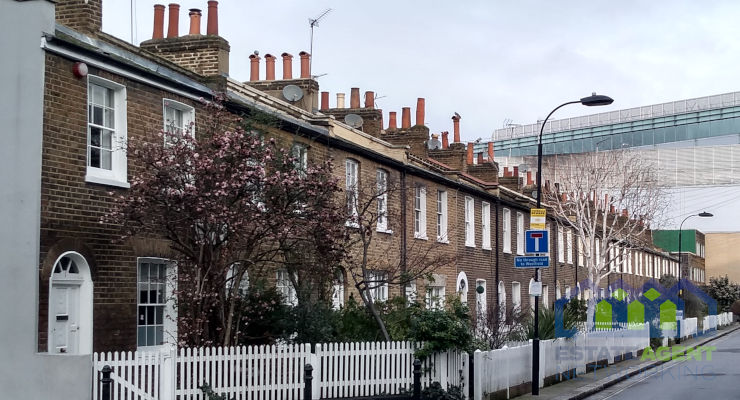What’s in a brand? Elements that make up a modern brand identity.
For years there have been reports of the death of the high street, with the internet widely considered the digital manifestation of the four horsemen of the apocalypse. But retailers and high street businesses who have learnt to adapt and evolve with changing trends have been able to maintain their footing and compete with their online rivals. The reason they have been able to do this is because they created a successful brand that has evolved to embrace the digital age.
What is a brand anyway?
“Unique design, sign, symbol, words, or a combination of these, employed in creating an image that identifies a product and differentiates it from its competitors. Over time, this image becomes associated with a level of credibility, quality, and satisfaction in the consumer’s mind”
– Business Dictionary
Therefore a brand identity is the perception of your company that you want to convey to your customer by using a series of images, words or designs to create your company branding. This branding becomes a signpost, showing your customer your mission, what features and benefits are associated with your product or services, and the most important of all, the promise you make to your customer.
How is a brand different from marketing?
Often ‘marketing’ and ‘brand’ are mixed up as the same thing, but they are two separate entities which work together for the end goal: sales. Marketing is the way you tell customers about your brand and your brand is the way to highlight your credibility and keep your customers loyal. However there is a natural order to this process; you need to have your brand clearly set out and in place before you can start marketing it, but once you start marketing and attracting new customers, your brand then keeps those customers loyal (but only if it is good!).
An integrated experience that is constantly evolving
Particularly for consumer facing businesses, brand identity and branding goes deep. Everything that is presented to the customer needs to be in line with the identity of the company. Using the same colours, imagery and text styles across all items. Including, signage, stationary, and decoration of shops and business premises. This consistency reinforces the ‘brand’ and helps the customer mentally associate a type face or colour to a particular business.
For example, Cadbury’s prodigious use of a shade of purple (known as Pantone 2865c) means that whenever you see that colour you will start to think about chocolate (though that might just be me!). The company has cleverly made its branding synonymous with a comforting, indulgent consumer experience.
Brand integration is also about your employees as brand ambassadors. If your employees are only motivated to sell your product because they get paid to do so, but wouldn’t buy that product or service themselves (regardless of the cost) then your brand is failing them as potential customers, and they in turn will fail to promote your brand or reinforce your customer promise.
Key is consistency and not alienating your market
Being consistent means using the same logo, typesetting, fonts and colour palettes across all business materials and media. Even if in some cases this has to be inverted or re-coloured, details of which should always be set out in a branded usage guidelines document. This consistent repetition means that customers don’t get overwhelmed by lots of differing elements, such as a logo appearing in vastly different colours, or a typeface that doesn’t fit with what they thought was the company’s style.
Successful brands rely on familiarity so if you aren’t consistent with your in-store branding then your customer will get confused about who you are and question if they can trust you.
Consistency and familiarity also contribute to a company’s brand equity. Brand equity is when companies, such as Coca-Cola, are able to capitalise on their brands familiarity by charging more than their competitors, as consumers believe (rightly or wrongly) that their product tastes better based on the trust that they have in that brand.
How can you be more innovative with your visual identity?
Although brand consistency is vital to success, it is important to refresh and regenerate your branding in line with the changes in consumer and market trends. If the typeface on your signage has fallen out of fashion (I am looking at you Comic Sans) then it is important to be aware of these trend changes and move with the times.
Although not a high street store, Google is a good example of evolving a brand image with the times. When Google first launched their search engine it was called Back Rub (yes, really) and the ‘logo’ featured an image of a man’s hand on someone’s back with red lettering (so far, so creepy). Within a year fortunately the logo was changed to a very basic version of the image used today. In 2015 the logo saw the latest revamp:

Over the 17 years of the company’s lifespan the logo has changed eight times, but no change has been as dramatic as the first jump from Back Rub to Google. So although the logo and branding has been incrementally tweaked over the years, keeping the branding relevant and fresh, the changes aren’t enough of a shock to affect how people feel about the brand itself. The main reason for Google’s most recent font and style change was to tie it in with its mobile application branding and show modernity and evolution from its more ‘Comic Sans’ origins.
A modern brand is much more than an evolving logo, it’s about evolving in all respects. Think about what technology you can use to showcase your brand. For instance, many estate agencies are now using branded digital screens in their office windows to provide their customers with a 360 interactive view of their properties.
In the age of the smartphone and tablet it’s an important part of your brand message that customers believe you to be a forward thinking, digitally savvy brand. Use of ‘always on’ back lighting, including LED illumination, can also help bring your brand to passers-by attention, 24-7.
Conclusion
Designing your brand and keeping your brand message and identity consistent in perpetuity will inspire trust and a sense of familiarity in your customer’s minds. This will give you the perfect foundations to creating brand integrity that works in both online and off. What does your brand say about you?








